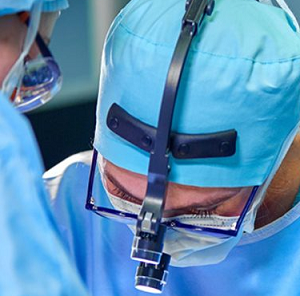Parametrectomy Right, Left, Recovery, Complications
Laterally extended parametrectomy (LEP) is a kind of invasive surgical operation that was developed to remove all of the parametrial tissue from the sidewall of the pelvis. LEP is now mostly used to remove tumors from the soft tissues of the sidewall of the pelvis during pelvic exenteration. The goal is to get lateral free margins. This extends the dissection's lateral bounds to include not just the medial surface of the internal iliac arteries, but also the real boundaries of the pelvic sidewalls.
Radical parametrectomy is appropriate in situations with undetected early-stage invasive cervical cancer identified following a benign hysterectomy. However, some benign disorders like endometriosis necessitate broad excision, including parametria. This intense surgical approach is rarely used for benign diseases.
When a patient undergoes a basic hysterectomy and an unexpected diagnosis of invasive cervical cancer is discovered, a radical parametrectomy together with pelvic lymphadenectomy and an upper vaginectomy is considered an alternative treatment. The risk of complications is higher than with a standard radical hysterectomy, but most of the problems are easy to fix. The degree to which cancer has spread into the cervical stroma is the single most important factor used to decide which patients will undergo surgical treatment.

Right & Left side spread
According to data obtained from a research study conducted on 64 individuals. 10.8%, were found to have metastatic spread to the parametrium. There was a significant correlation between parametrial disease and histology, extensive cervical invasion, lymphovascular space invasion (LVSI), large tumour size, involvement of both the uterus and the vaginal canal, pelvic and para-aortic lymphadenopathy. Data gathered from this study reveals that 25% of the cases showed characteristics of parametrial growth with bilateral parametrial involvement, 44% had right-sided spread, and 31% had spread to the left parametrium. 52 % had primary tumour extension, 41% had parametrial nodal tumors, and 27% had tumour growth through vascular pathways.
Recovery
Daniel and Brunschwig were the first people to describe the procedure known as radical parametrectomy. The pelvic and/or para-aortic lymph nodes are typically removed together with the procedure, which typically includes an upper vaginectomy. On the other hand, there is a possibility that an incidental damage may occur as a result of the previous surgery's damage of the normal structure and the formation of pelvic adhesions. About 30% of patients reported experiencing postoperative problems linked to radical parametrectomy. Patients who have undergone several surgeries or have other underlying disorders may have a longer recovery time.
Complications
This is a major invasive procedure which is associated with multiple complications especially if patient has some other underlying conditions or had multiple surgeries in past.
 Reviewed by Simon Albert
on
August 15, 2022
Rating:
Reviewed by Simon Albert
on
August 15, 2022
Rating:











